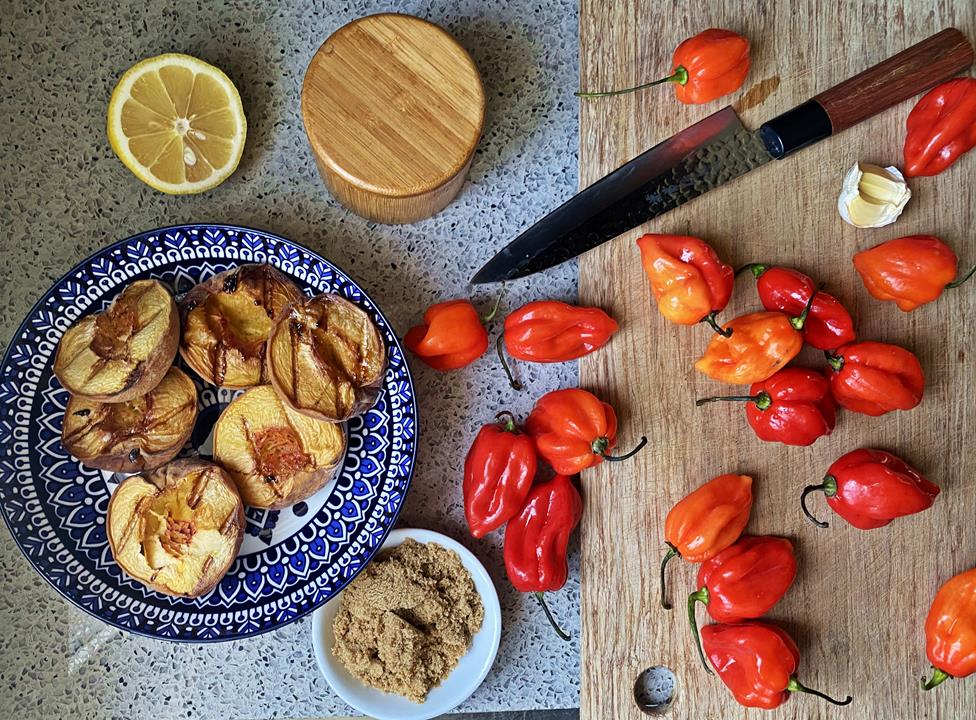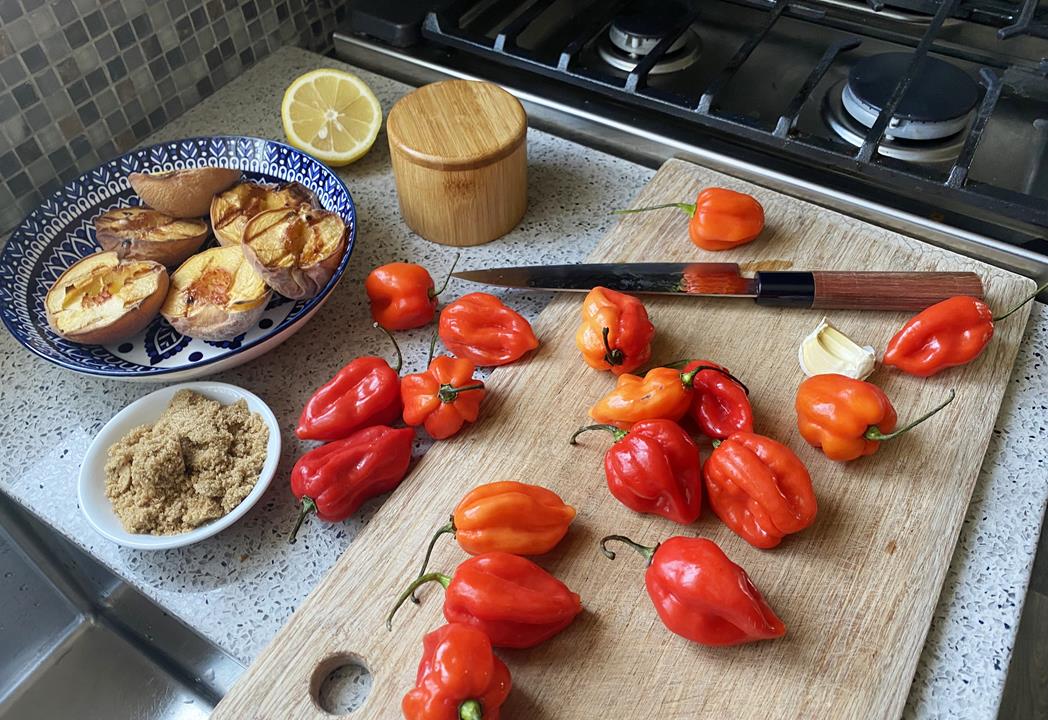
With some of the BEST peaches in the world (say hi Georgia) grown in the orchards about a 30 minute drive away from me, from time time I do put them to use use in my kitchen. Admittedly I’m not a fan of Peach (pie, drink, ice cream, cobbler etc), however, with the addition of Scotch Bonnet peppers… it the perfect combination for a wicked pepper sauce (hot sauce). Add a kiss of smoke and look how you just elevated the ting!

You’ll Need…
3 large ripe peaches
18 Scotch Bonnet peppers
2 tablespoon brown sugar
1/2 teaspoon sea salt
1 cup white vinegar
2 cloves garlic (crushed)
1/2 teaspoon dry mustard (powder)
1/2 lemon (juice)
Notes! If doing this recipe gluten free, please go through the full list of ingredients to ensure they meet with your specific gluten free dietary requirements. Remember to wear gloves and wash your hands IMMEDIATELY after with soap and water. In the video below I explained why I prefer using a food processor and not a blender in making this peach scotch bonnet pepper sauce.
Set you grill to 350 F and grill/smoke the peaches (cut in half and stone removed). It really doesn’t matter if they’re place skin or cut side down. In my case I used my Traeger Smoker and went with apple wood. Any fruity wood will be great.

While the grill/smoker does it’s thing, wash the peppers, remove the stems and give them a rough chop. Besides Scotch Bonnet peppers, you may also use Habaneros as they have a lovely kick along with an undertone of fruitiness.

Once the peach halves comes off the grill and they cool enough to handle, give them a rough chop as well.

May I recommend that you vent your kitchen as the scent/fumes from the peppers can potentially choke you. Especially when you open the food processor.

Place all of the ingredients in the food processor and pulse until you achieve a texture you like. Add more white vinegar if you find that it’s a bit too thick.



As explained in the video below, I then set my smoker to 180 F (it’s called Super Smoke on the Traeger). I then poured the peppersauce into a wide (explained in the video) heatproof dish and smoked it for one hour. The goal with the 2nd layer of smoke was to gently kiss the pepper sauce. However if you prefer a more pronounced smoke flavor, may I recommend smoking for at least 3 hours.


Once off the smoker allow the pepper sauce to cool before pouring into sterilized glass containers. This Double Smoked Peach Scotch Bonnet Pepper Sauce will keep in the fridge for at least 6 months easily. Do not use a dirty or wet spoon when you dip in or it will go bad quicker.

Do taste and adjust the salt before pouring into bottles. You’re looking for a perfectly balanced fruity, spicy and gently smoked pepper sauce. The lemon juice will help brighten things up a bit as well and the garlic will round things off nicely.

Use as you would your fav hot sauce yea.









































